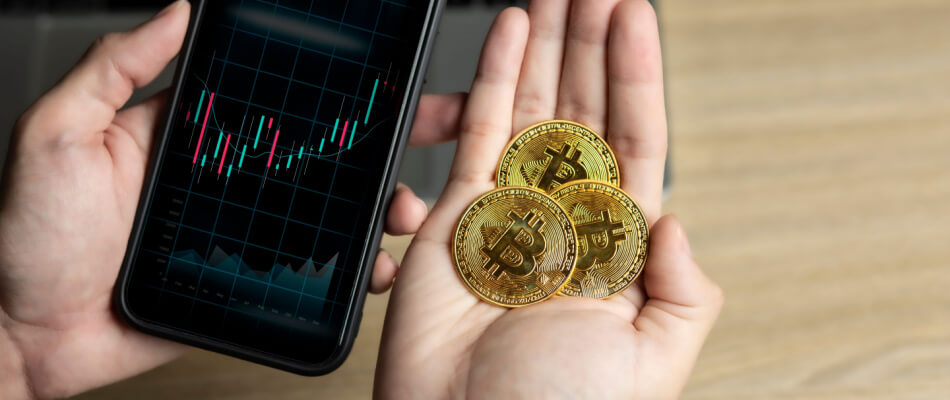What is a cryptocurrency exchange?
A cryptocurrency exchange, also called a crypto exchange, is an online platform where you can trade in cryptocurrencies . There are different platforms.
Which coins can be traded can vary greatly per platform. Although you can assume that you can always trade Bitcoin on every exchange. On one platform you can only trade in a few of the largest cryptocurrency coins such as Litecoin and Ethereum, while on other exchange platforms you can trade in lesser-known, smaller currencies. The exchanges also differ in terms of their trading volume, which is the amount of coins that are traded. This is often referred to as the trading volume of the past 24 hours. There are also different types of cryptocurrencies .
Besides the trading volume, the number of trading pairs is also important information about an exchange. A trading pair indicates the ‘market’ in which you are trading. The trading pair BTC/LTC tells you that you can trade Bitcoin for Litecoin and vice versa.
The more trading pairs, the more possibilities an exchange offers to trade in different cryptocurrencies. Another important parameter is the Bitcoin withdrawal fee, this is the amount you have to pay to withdraw Bitcoins. For example, you can withdraw them from your exchange and add them to your hardware wallet (more about the hardware wallet later). The fee can differ greatly between the different cryptocurrency exchanges.
What should you pay attention to when choosing a crypto exchange?
The various cryptocurrency exchanges can differ quite a bit (greatly). It is therefore important to make a well-considered choice, tailored to your wishes. Anyone who wants to trade in crypto coins would therefore do well to determine which is/are the right exchange(s). You can take the following into account:
Reliability
Cryptocurrency has only been around for a few years and is still relatively new. Many exchange platforms have not been around for that long and may still be in their infancy. It is important that you as a consumer are aware that in the past, several exchanges have been robbed of large amounts because hackers managed to penetrate the system. After all, it is not self-evident that exchanges can store your coins safely at all times, there is always a certain risk.
However, you do not have to be discouraged because over the years, several exchanges have grown into trading platforms with an impeccable reputation regarding their online security. A handy way to gather more information about this is the reviews that you can read on the internet. Search for whether there have already been any irregularities at that one exchange. It can also be interesting to check how the exchange guarantees security.
You have additional security if you withdraw all your coins from the exchange and store them in your hardware wallet (also called a cold wallet).
Exchange offering
Some exchanges prefer to play it safe and offer a small selection with only the strong, well-known cryptocurrencies. Think of Coinbase for example. Other exchanges focus on quantity because you can find almost everything here and will therefore only use this exchange. Finally, there are exchanges that only offer almost unknown cryptocurrencies.

Supported payment options of the exchange
Some exchanges only allow you to deposit certain cryptocurrencies, after which you can continue trading yourself. Other exchanges offer the possibility to purchase one or more cryptocurrencies at once with fiat money. It is advisable to carefully determine which payment method you will use to avoid additional costs. When purchasing via credit card, additional costs may be incurred, while a purchase via bank transfer can take several days.
Cryptocurrency exchange fees
Exchanges charge fees, this can happen in different ways. Most cryptocurrency exchanges require you to pay to trade cryptocurrencies . There may also be fees for transferring via deposits and/or for withdrawals. Some exchanges offer the possibility of a discount, for example by holding certain cryptocurrencies (such as those of the exchange itself).
The rate at the exchange
The price of the cryptocurrency can vary greatly per exchange due to the interaction between supply and demand. Comparing the prices of the different exchange platforms can be worthwhile. You should take into account the additional costs that can also vary greatly per exchange. With all this in mind, you will be able to make a well-considered choice.
Usability of the exchange
As a trader and consumer, it is important that you can achieve your goals quickly and easily. There is nothing more annoying than a website that loads slowly or a site where the overview is lost. Therefore, ask yourself questions about the user-friendliness of the exchange. Can you easily navigate the site, both via mobile and via PC? Is everything neatly explained and can you find what you are looking for?
Support for the exchange
If something goes wrong, it is good to know that you can contact the support service. How can you contact them and will your question be answered properly? Of course, you also want a quick answer, especially when a certain price is very late.
Compare brokers and start investing in cryptocurrency
Are you excited about investing in cryptocurrency after reading this article? Compare brokers and find the broker that suits you best!